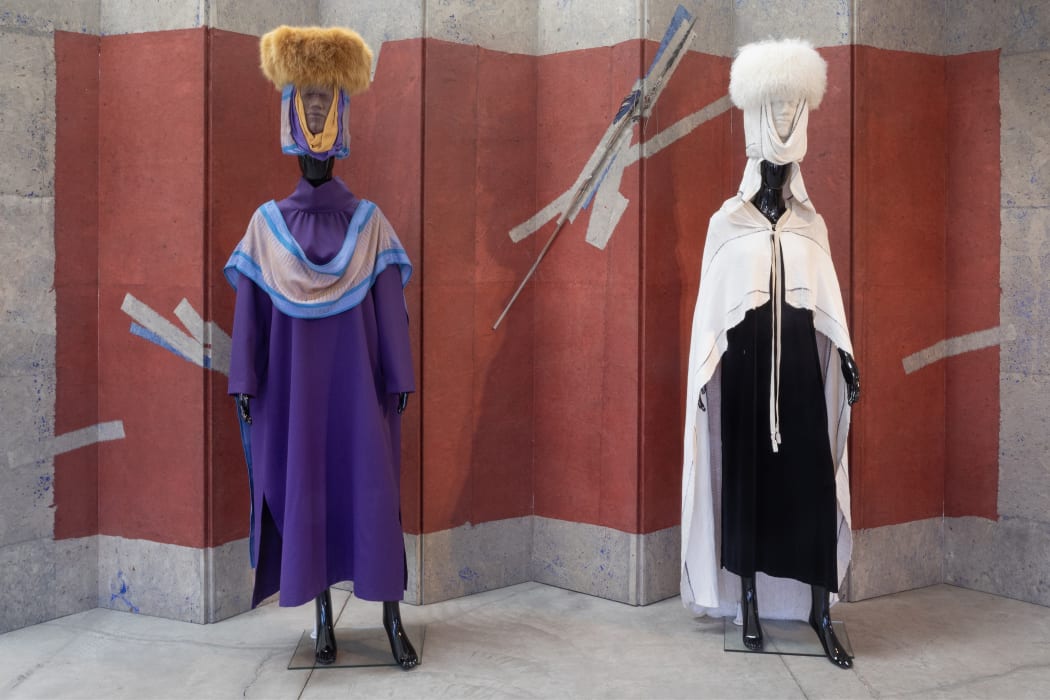
THREADS OF CONTINUUM: MARGARET ROACH WHEELER
Margaret Roach Wheeler (b. 1943, Sisseton, South Dakota) is a Chickasaw textile artist whose handwoven garments and fiber sculptures center around identity, cultural memory, and storytelling. Using her loom to hand weave fabric that is sometimes dyed with mushrooms and various plants foraged in her land in Sulphur, Oklahoma, Wheeler creates garments informed by her research on precolonial Indigenous designs and inspired by her cultural heritage and family legacy. The result is a body of work that ties together the rich threads of contemporary fashion, ancestral resilience, and cultural identity.
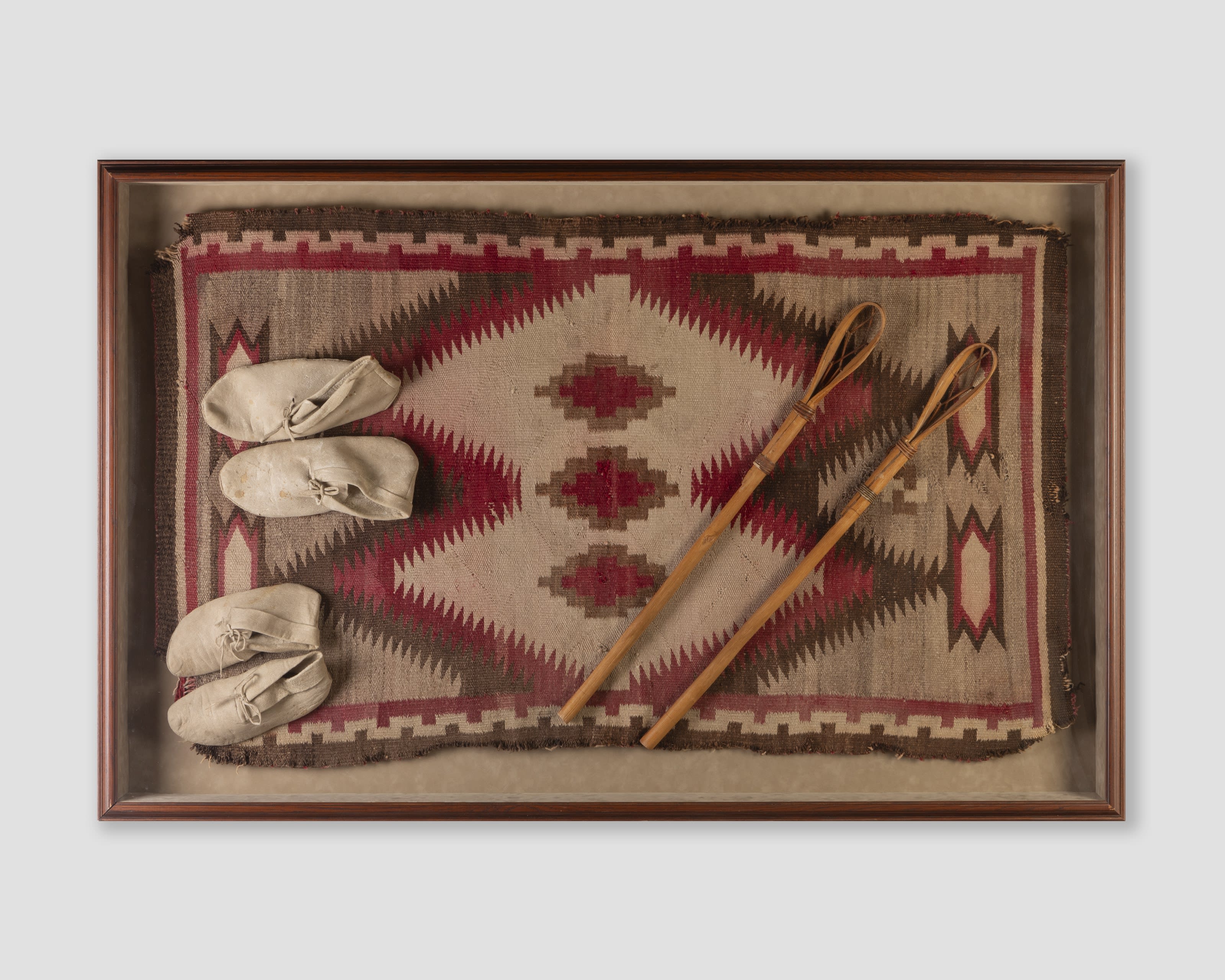
MARGARET ROACH WHEELER | Legacy, NFS. Moccasins, textile rug and stickball sticks, 38 3/4 x 58 3/4 in (98.4 x 149.2 cm).
Woven throughout the larger tapestry of Wheeler’s oeuvre are threads of her family history and her Chickasaw and Choctaw heritage. Her path to an artistic practice was shaped in early childhood by the tactile rhythms of her mother’s and grandmother’s fiber work, such as sewing, crocheting, and embroidery. The art of the fiber work done by the women in Wheeler's childhood home sowed the seed for the artist's own creative practice and is honored in a recent work titled Grandmother’s Story.

MARGARET ROACH WHEELER | Grandmother’s Story, NFS. Cross-stitched handwoven sampler on screen printed linen, needle and thread, 51 x 15 in (129.5 x 38.1 cm).
Grandmother’s Story speaks to the fiber work inherited through generations of women in her family, as well as to the cultural and personal resilience of her relatives. A divergence from the fashion garments that Wheeler has become known for, this wall hanging centers on a piece of linen fabric stitched on by the artist’s grandmother, Juel Boyd Massey. The needle Massey used, still pinned to the fabric she had not finished stitching, sits as an heirloom symbol of the generational love of craft that runs through Wheeler's family. Wheeler in fact picked up from where her grandmother left off to complete the stitching at the bottom of the fabric. It is on this cloth that Wheeler then attached her own handwoven fabric—hand-dyed with mushrooms, elm bark, and oak gall she foraged—that she then embroidered like a sampler. The English alphabet cross-stitched at the top reads in stark contrast to the defiant declaration below it: “I WILL NOT SPEAK ENGLISH! CHAHTA SIA! (I am Choctaw!)” Underneath this declaration is a list of Wheeler’s paternal ancestors, beginning with Jincy Beams, who “came to [Indian Territory] in 1833,” and ending with Johanna Choate, the artist’s paternal grandmother, who was “whipped for speaking Choctaw.” Choate’s portrait is printed at the bottom of Massey’s cloth. The threads of ancestral continuum are woven through every object Wheeler creates.

MARGARET ROACH WHEELER | Tribute to Diamond, 1996, NFS. Handwoven silk and wool caftan with a hood in a shadow weave pattern
Tribute to Diamond (1996) is a handwoven silk and wool hooded caftan Wheeler created after the passing of her father in 1993. The garment’s title and the diamond pattern within the weave of its fabric pay homage to the artist’s father, Diamond. The dark tones on the bottom of the garment’s exterior represent the darker memories of her father’s past, about which he did not often speak, while the gradual fading to white expresses the wisdom and peace he gained with age. When pulled around the wearer with arms folded, the garment becomes a cloak of intrigue, covering all but the eyes in a sheath of white that gradually transitions to grays and blacks toward its bottom hem. Extending the arms outward and removing the hood unveils a colorful jewel-toned fabric, revealing the beauty and complexity within. The result is a stunning figure that stands as a towering pillar of strength, protecting—or sharing, depending on the wearer’s stance—the jewel-toned metamorphosis of its interior.

MARGARET ROACH WHEELER | Rapt Dawn - The Crane, Hand-dyed silk. Headdress by Maria Mayo; Fabric construction by Alice McKee.
Also characteristic of Wheeler’s practice is a collaborative spirit, which is evident in the headpieces made with Maria Mayo and Alice Mckee and the costumes created for Lowak Shoppala’ (“Fire and Light”), a performance piece that expresses Chickasaw identity and history through classical music composed by Jerod Impichcha̱achaaha' Tate and poetic narration written by Linda Hogan. The costumes for this performance were designed and handwoven by Wheeler and informed by the apparel and woven fabrics she studied from the Spiro Mounds and Mississippian cultures from 1200 to 1500 AD.
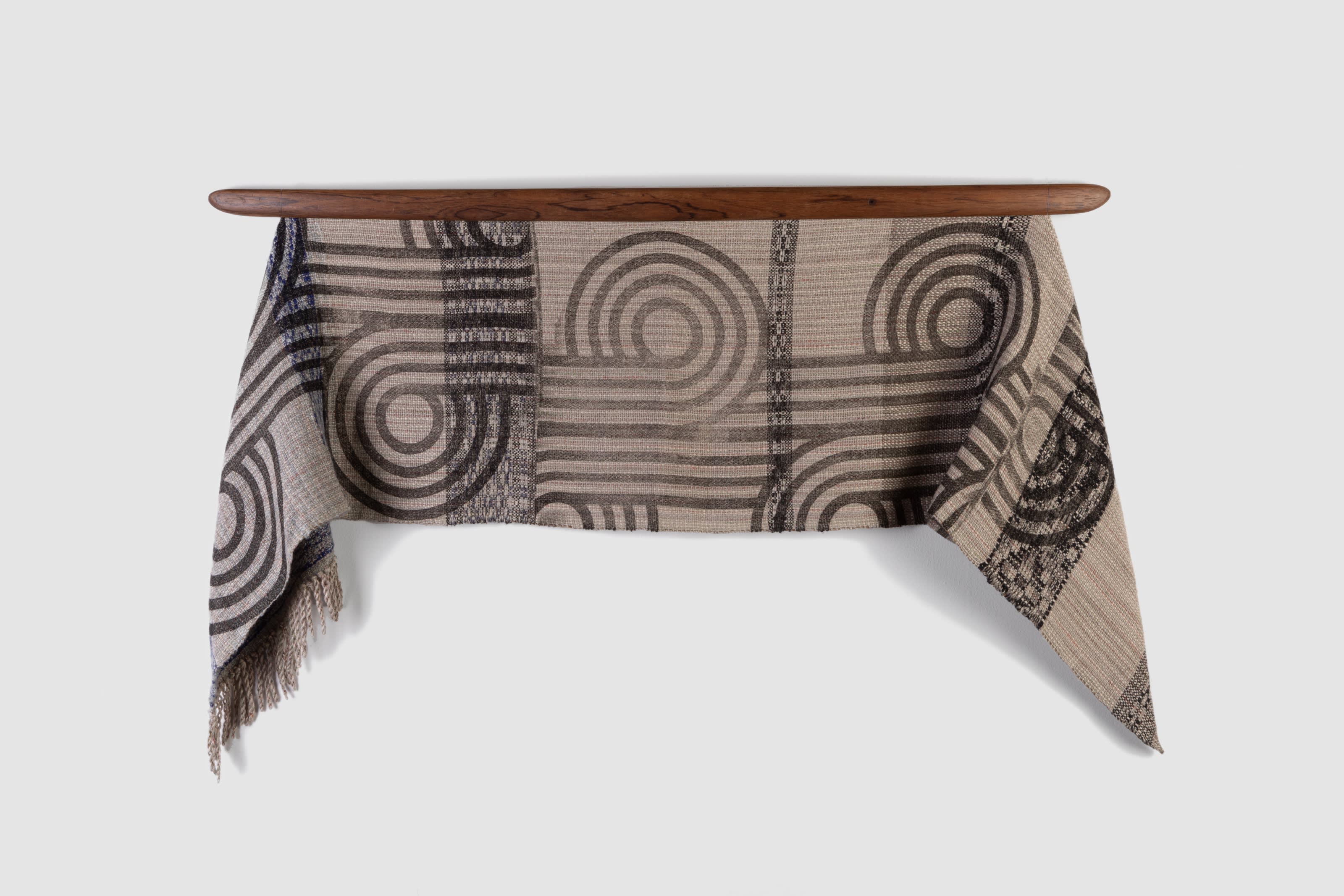
MARGARET ROACH WHEELER and MARWIN BEGAYE | Water Flow, screen print on handwoven linen fabric, 12 x 36 in (30.5 x 91.4 cm).
Among Wheeler’s most recent collaborations are works with Marwin Begaye (Navajo/Diné), presented in tandem with Summer Winter in the mini exhibition Collective Wisdom. The four wall hangings included in this exhibit feature Begaye’s printed designs on Wheeler’s handwoven fabrics. The artists contributed to each piece individually, relinquishing artistic control to create artworks that are both personal and conversational, thereby embracing the collaborative spirit of Indigenous storytelling and the importance of shared cultural knowledge.
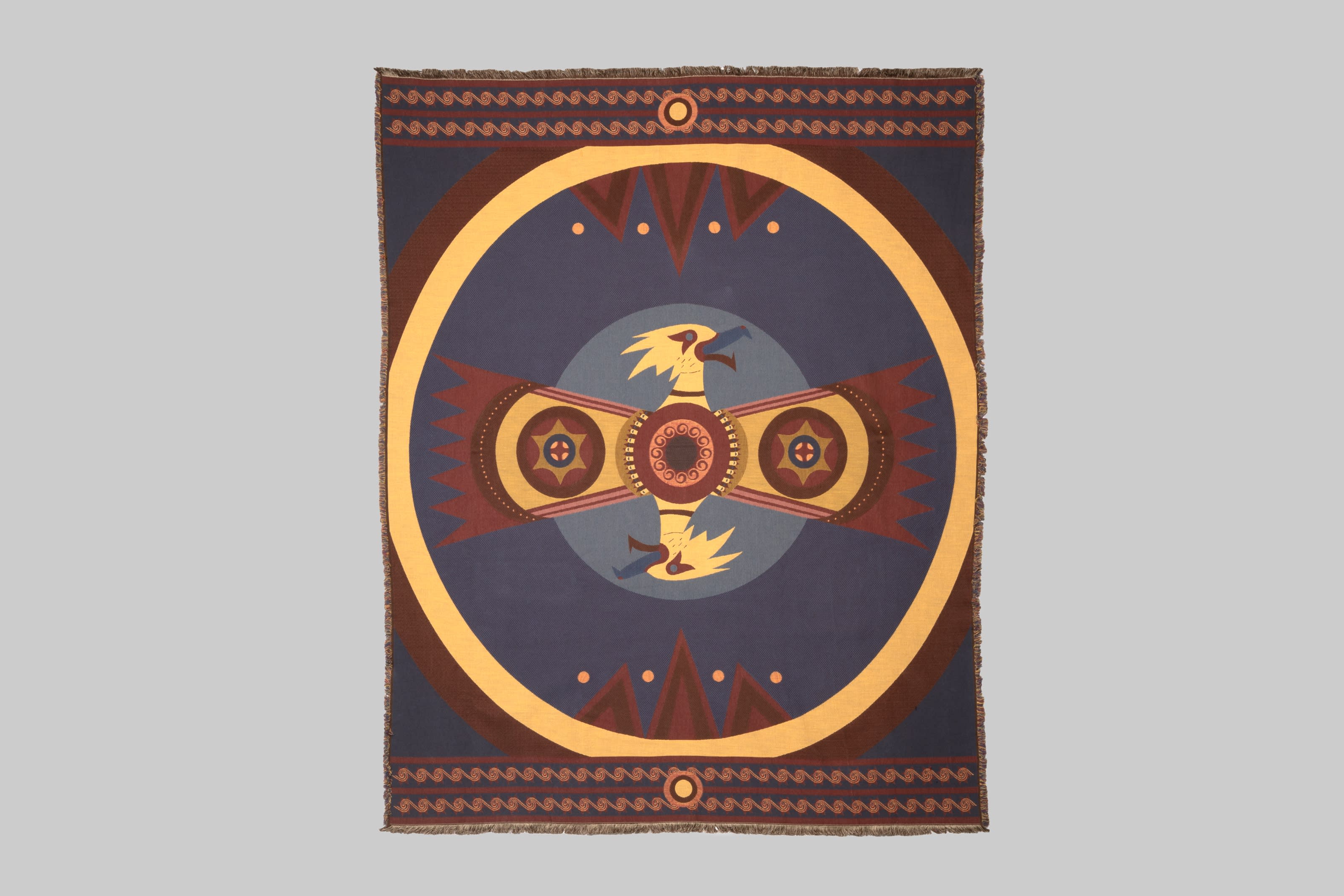
MAHOTA TEXTILES | Eagle Blanket, cotton, 64 x 51 in (162.6 x 129.5 cm).
Wheeler’s work in cultural preservation and storytelling carries through to the company she founded, Mahota Textiles, the first tribally owned textile company in the United States. The company is named to honor the spirit of her maternal great-great-great-grandmother, Mahota, who came to Indian Territory from Mississippi during the Chickasaw Removal in 1844 and whose name is also a word in the Chickasaw and Choctaw languages meaning “to separate by hand,” another connective thread to Indigenous craft practices passed down through generations of artisans. Producing designs by Wheeler as well as other Indigenous artists, Mahota Textiles is the fruition of Wheeler’s own legacy: a place where heritage meets innovation and collaboration in contemporary textiles that are rooted in Southeastern tribal culture and history. For example, Wheeler’s Hatchet Woman, is inspired by the fierce Chickasaw women who drove away their foes during the French and Indian War with nothing but their iron hatchets and their voices singing war songs in unison to protect their land and way of life.
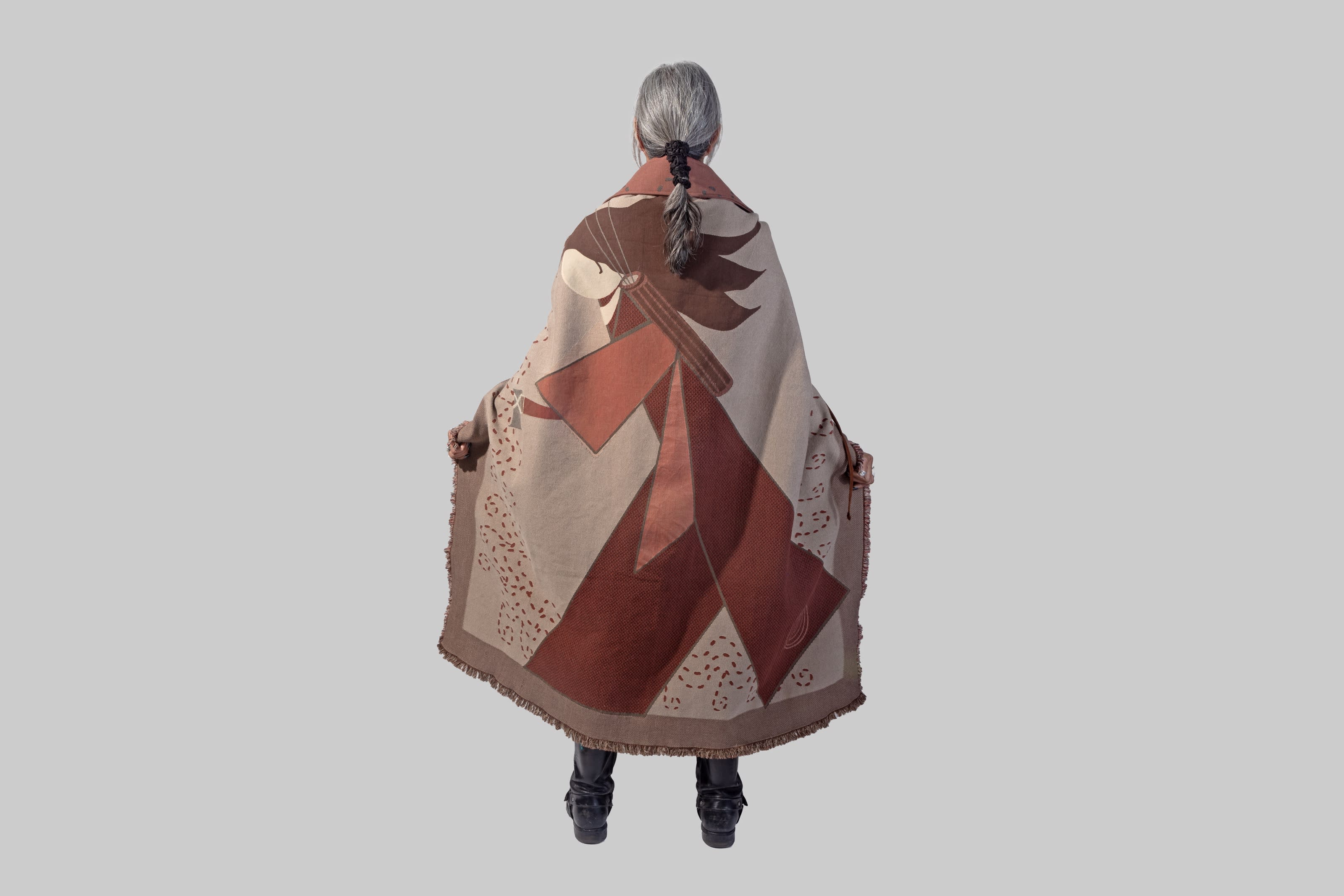
MARGARET ROACH WHEELER and ANASTAZIA LOUISE ARANAGA | Hatchet Woman, 2025, 100% cotton cape
Whether hanging in a gallery, walking down a fashion show runway, or displayed in the storefront of her textile company, Wheeler’s work stands as a testament to the enduring continuity of Indigenous cultures. Blending historical and ancestral reverence with artistic innovation and collaboration, Wheeler creates artworks that speak to the past and present, to the personal and the collective. Wheeler’s woven compositions are codices of meaning that evoke ancestral histories, cultural knowledge, and the embraced imperative to persevere in the face of colonization and its ever-evolving aftershocks. The act of weaving itself becomes a metaphor for the interlocking nature of cultural preservation, personal memory, and Indigenous sovereignty. Ultimately, Wheeler’s practice is both a reflection of her personal journey and a broader meditation on living Indigenous artistic customs. Through a dialogue between historical continuity and contemporary experimentation, her work invites viewers to engage with the complexity of Indigenous experience and the enduring power of cultural expression.
—Kaylan Roach Bebout
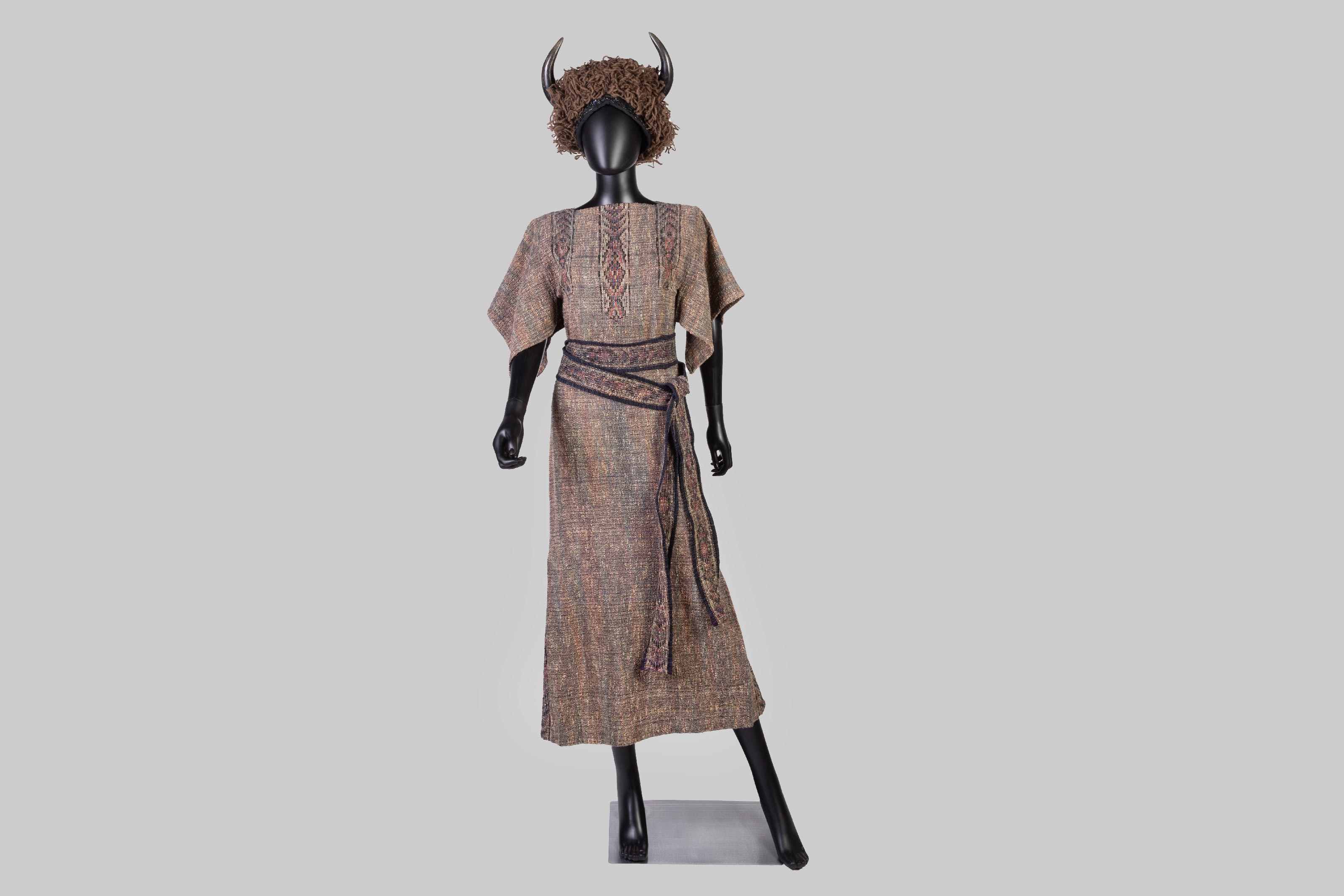
MARGARET ROACH WHEELER | Cheyenne Buffalo Woman, handwoven cotton, yarn spun from buffalo hair
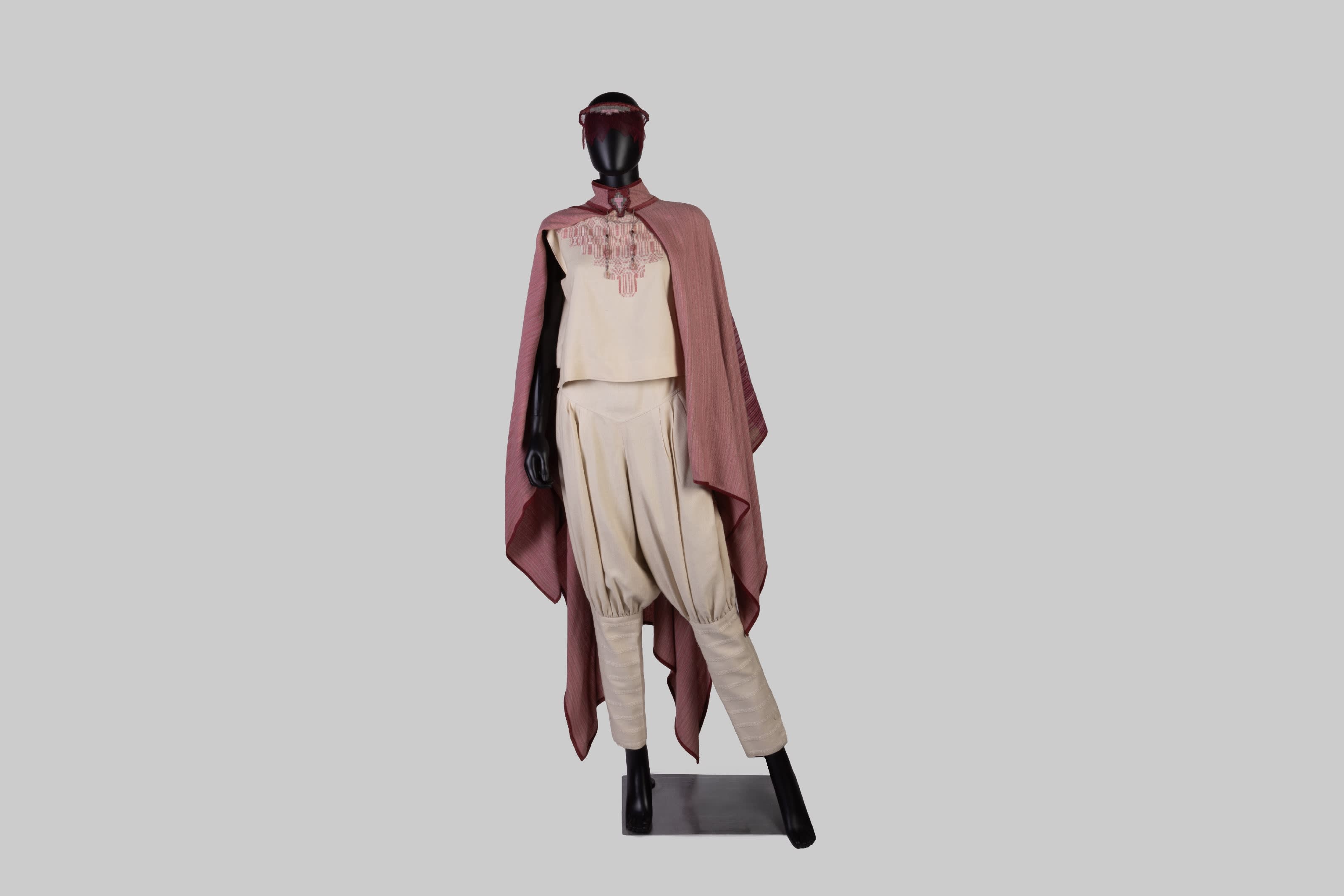
MARGARET ROACH WHEELER | Fort Sill Apache, silk sleeveless top in summer winter weave, silk pants, and silk/wool cape; beaded face mask